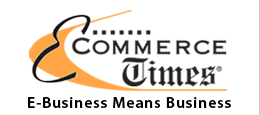Will the Rising Cost of Sales Cost SaaS Companies VC Funding?
My friend Phil Wainwright’s latest blog post re: LucidEra’s new pre-sales program, Pipeline Healthcheck, confirms many of my initial observations when the company first introduced the program in October. Phil’s post includes a number of interesting stats which LucidEra’s founder, Ken Rudin, also shared with me at Salesforce.com’s Dreamforce event.
LucidEra’s decision to move away from the typical free-trial approach to selling SaaS is significant because it exemplifies a subtle trend which is brewing in the on-demand services market.
Although many SaaS solutions can be sold using a ‘try and buy’ technique, a growing number of SaaS vendors are discovering that they must employ other sales tactics to sell their solutions. In some cases, like the LucidEra example, it is because they are trying to demonstrate the power of their functionality to a target buyer who is unfamilar with the basic idea. In other cases, the SaaS vendor is offering a more complex solution which is going to have a significant impact on the customer’s operations and requires greater sales skills and resources.
An example of this second scenario is Salesforce.com’s growing focus on large-scale enterprise sales. Selling its customer relationship management (CRM) solution to Global 2000 companies requires more than a 30-day trial to be successful. That is why the company has been aggressively recruiting traditional software salespeople from companies like Oracle and SAP to attack major accounts. I had an opportunity to speak to over 700 of these ‘big-game hunters’ at Salesforce.com’s North America sales kickoff meeting last February.
This shift in sales strategies and tactics has raised concerns among the VC and broader investment community about the long-term viability of the SaaS industry. These investors are worried that adding more high-powered salespeople and creating more complicated sales processes will increase the cost of sales and reduce the operating margins of SaaS companies. They are concerned that this will undercut the price advantage of SaaS over traditional, on-premise software vendors.
An example of this thinking is a recent post by Evangelos Simoudis of Trident Capital. While there is a legitimate concern that many SaaS vendors, like companies in general, have a tendency to be inefficient in the way they allocate their sales and marketing budgets, I believe some of the investment community’s angst is based on an industry benchmark which is no longer relevant.
That benchmark is the exorbinant operating margins which incumbent software vendors (iSVs) have enjoyed over the years. Investors are concerned because they haven’t seen profit margins of over 60% from SaaS companies like those they’ve been accustomed to seeing in the packaged software industry.
However, if you look closely iSVs are finding it equally difficult to sustain their profit margins as customers become disenchanted with high upfront perpetual license fees and escalating maintenance costs. So, comparing emerging SaaS vendor profitability with historic iSV profitability is no longer valid.
I debated Bruce Richardson of AMR Research on this point earlier this year. Bruce was questioning whether the SaaS industry could sustain itself given the high cost of sales and marketing reported by the publicly traded SaaS vendors. My view then and now is that the long-term profitability of SaaS is not reflected in today’s financial reports for two reasons,
- The SaaS industry is still in its infancy and SaaS vendors must spend a disproportionate amount of their revenues, and/or VC funds, on sales and marketing to educate customers about the intrinsic value of their on-demand solutions. This includes the ‘try and buy’ and other sales and marketing techniques aimed at encouraging rapid adoption.
- Companies like Omniture, Salesforce.com and SuccessFactors are intentionally overspending on sales and marketing to aggressively win market share. As Josh James of Omniture has stated in his blog and at industry conferences, SaaS companies which know their ‘magic number’–the incremental revenues generated by every additional sales and marketing dollar spent–are obliged to put the ‘foot to the metal’ now so they can win as much market share as possible before the industry consolidates.
So, my concern isn’t whether SaaS is a profitable business model. Instead, my concern is whether the VCs, private equity firms and other traditional funding sources are going to retreat from the SaaS market because they have unrealistic expectations for this sector.
While it is reasonable for them to be more conservative in their funding strategies and investments given today’s economic crisis, it would be disappointing to see them abandon the SaaS market because they’ve lost faith in the business model.




